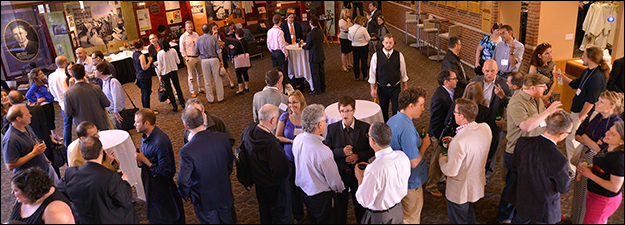The Secret Life of Medieval Plants
Sponsoring Organization(s)
Special Session
Organizer Name
Rob Wakeman, Danielle Allor
Organizer Affiliation
Univ. of Maryland, Rutgers Univ.
Presider Name
Rob Wakeman
Paper Title 1
Human-Plant Assemblages in the Cornish Ordinalia Plays
Presenter 1 Name
Robert W. Barrett, Jr.
Presenter 1 Affiliation
Univ. of Illinois-Urbana-Champaign
Paper Title 2
What Makes the Cut: Selection and Omission in the Tree Catalog
Presenter 2 Name
Danielle Allor
Paper Title 3
The Secret Life of Dead Plants
Presenter 3 Name
Haylie Swenson
Presenter 3 Affiliation
George Washington Univ.
Paper Title 4
"Ripeness is all": Plants, Oedipal Myths, and King Lear
Presenter 4 Name
Vin Nardizzi
Presenter 4 Affiliation
Univ. of British Columbia
Start Date
15-5-2015 10:00 AM
Session Location
Bernhard 106
Description
Although plants are often considered the baseline form of life (i.e., Aristotle's vegetal soul) against which 'higher' forms of life are measured, and plants are often relegated to mere 'environment' or 'setting' (e.g., woodland, pasture, wold, heath) on which writers and artists stage the actions of more animate beings, this panel takes up a 'plant's eye view' of the Middle Ages. We invite papers that push back on our inherited modern idea of vegetal life, what Matthew Hall calls the 'Platonic-Aristotelian backgrounding of plants.' Rather than viewing plants as passive backdrop or as sessile, stable objects, this panel will bring together papers that examine how medieval writers, artists, thinkers, and theologians thought with and became entangled in the secret life of plants. From barnacle trees that grow geese in Sir Gawain and the Green Knight and the botanical empircism of medieval herbals in the tradition of Aristotle and Theophrastus to the exotic fantastical plants of John Mandeville's travels and Cain's spurned vegetable sacrifice in the Towneley Mactatio Abel –plants demand attention in medieval literature. How do plants – whether mythical, symbolic, or real - flourish in the medieval period? As forms of life that can shed parts of themselves without compromising the core identity of the plant, how do plants influence our thinking about sacrifice and regeneration? What do old-growth vines, hoary yews, ancient olive trees, and other plants that live for thousands of years teach humans about time, eternal life, and deep roots? How do plants intoxicate, ensnare, and provoke desire in humans and other animals - and what is it that they desire from us? What do technologies of cultivation such as grafting and coppicing reveal about hybridity or the location of identity?
Rob Wakeman
The Secret Life of Medieval Plants
Bernhard 106
Although plants are often considered the baseline form of life (i.e., Aristotle's vegetal soul) against which 'higher' forms of life are measured, and plants are often relegated to mere 'environment' or 'setting' (e.g., woodland, pasture, wold, heath) on which writers and artists stage the actions of more animate beings, this panel takes up a 'plant's eye view' of the Middle Ages. We invite papers that push back on our inherited modern idea of vegetal life, what Matthew Hall calls the 'Platonic-Aristotelian backgrounding of plants.' Rather than viewing plants as passive backdrop or as sessile, stable objects, this panel will bring together papers that examine how medieval writers, artists, thinkers, and theologians thought with and became entangled in the secret life of plants. From barnacle trees that grow geese in Sir Gawain and the Green Knight and the botanical empircism of medieval herbals in the tradition of Aristotle and Theophrastus to the exotic fantastical plants of John Mandeville's travels and Cain's spurned vegetable sacrifice in the Towneley Mactatio Abel –plants demand attention in medieval literature. How do plants – whether mythical, symbolic, or real - flourish in the medieval period? As forms of life that can shed parts of themselves without compromising the core identity of the plant, how do plants influence our thinking about sacrifice and regeneration? What do old-growth vines, hoary yews, ancient olive trees, and other plants that live for thousands of years teach humans about time, eternal life, and deep roots? How do plants intoxicate, ensnare, and provoke desire in humans and other animals - and what is it that they desire from us? What do technologies of cultivation such as grafting and coppicing reveal about hybridity or the location of identity?
Rob Wakeman


